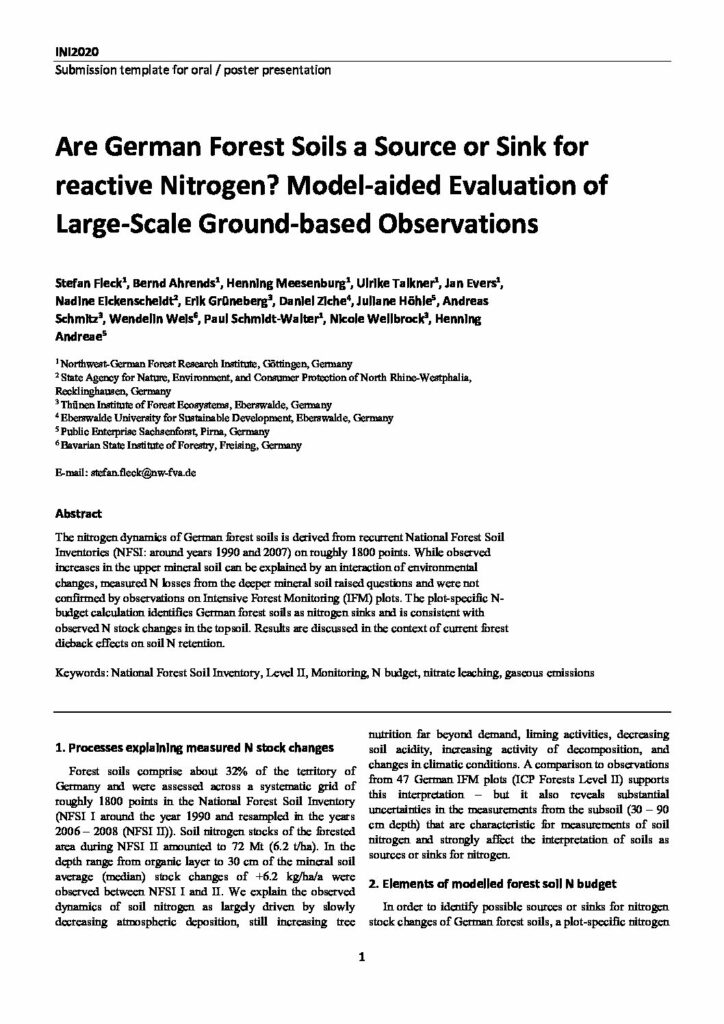Are German Forest Soils a Source or Sink for reactive Nitrogen

The nitrogen dynamics of German forest soils is derived from recurrent National Forest Soil Inventories (NFSI: around years 1990 and 2007) on roughly 1800 points. While observed increases in the upper mineral soil can be explained by an interaction of environmental changes, measured N losses from the deeper mineral soil raised questions and were not confirmed by observations on Intensive Forest Monitoring (IFM) plots. The plot-specific Nbudget calculation identifies German forest soils as nitrogen sinks and is consistent with observed N stock changes in the topsoil. Results are discussed in the context of current forest dieback effects on soil N retention.
Forest soils comprise about 32% of the territory of Germany and were assessed across a systematic grid of roughly 1800 points in the National Forest Soil Inventory (NFSI I around the year 1990 and resampled in the years 2006 – 2008 (NFSI II)). Soil nitrogen stocks of the forested area during NFSI II amounted to 72 Mt (6.2 t/ha). In the depth range from organic layer to 30 cm of the mineral soil average (median) stock changes of +6.2 kg/ha/a were observed between NFSI I and II. We explain the observed dynamics of soil nitrogen as largely driven by slowly decreasing atmospheric deposition, still increasing tree nutrition far beyond demand, liming activities, decreasing soil acidity, increasing activity of decomposition, and changes in climatic conditions. A comparison to observations from 47 German IFM plots (ICP Forests Level II) supports this interpretation – but it also reveals substantial uncertainties in the measurements from the subsoil (30 – 90 cm depth) that are characteristic for measurements of soil nitrogen and strongly affect the interpretation of soils as sources or sinks for nitrogen.
